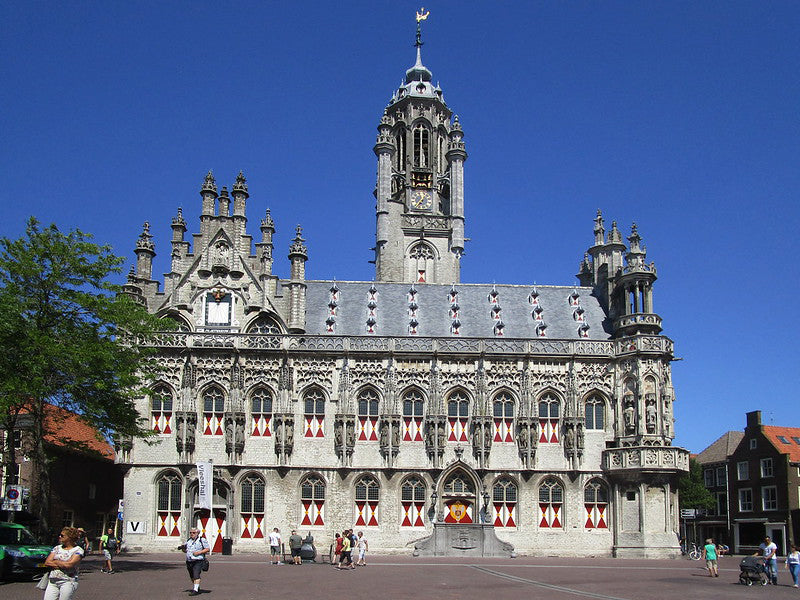Dating back to the 9th century, Middelburg is the capital of the province of Zeeland and currently has a population of approximately fifty thousand.
Some interesting facts:
- Middelburg, located in the center of Walcheren, was one of the three fortified towns that protected the former island against the Norsemen. The other two were Domburg and Souburg.
- During the Golden Age Middelburg was the second most important trading city in the Dutch Republic after Amsterdam.
- The Koorkerk, which dates back to the 13th and 14th centuries has the oldest organ in the country, the Nicolaï organ, which was built in 1479.
- For a wonderful view of the city, you can climb the 207 steps that lead the top of the Lange Jan, the third tallest tower in the Netherlands.
- On May 17th 1940, during the German invasion of the Netherlands approximately one-third of the inner city was destroyed by bombs and artillery fire and the subsequent fires that raged through the city. Twenty-two civilians were killed, but had the city not been evacuated three days earlier, the casualties would have much more devastating. Six hundred buildings – most of them historic monuments – were destroyed, and eight hundred families were left homeless. After the War almost all buildings were restored to their original splendor.
- Middelburg's City Hall was voted the country’s second most beautiful building in 2007, after the top-placing modern Gas Board Head Office in Groningen.
- Zeeland’s most popular treats, all available in abundance in its capital, include Zeeuwse boterspeculaas (Gingerbread cookies), Zeeuwse suikerwafels (thin sugar waffles), Zeeuwse boterbabbelaars (butterscotch candies) which typically are sold in a souvenir tin. When in season locally sourced Mussels are a special treat!
For more details about Middelburg and its many historic sites, read our Travel feature in Issue 17 of Dutch the magazine.
To receive information about the Netherlands, the Dutch, and the Dutch diaspora, on a regular basis, subscribe to Dutch the magazine!
